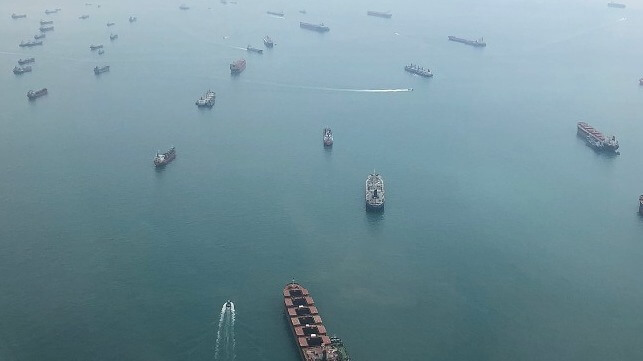New Contract System for JIT Arrival Could Save 15 Percent on Fuel
A new approach yields "most of the benefits of ‘just-in-time’ arrivals, without most of the problems"

NAPA has teamed up with international law firm Stephenson Harwood and a group of leading maritime stakeholders to come up with a legal/technical fix for the ubiquitous "sail fast then wait" (SFTW) phenomenon, which wastes fuel on unnecessary but contractually-incentivized fast transits. As an example of the impact of this arrangement, the bulker fleet spends about 10 percent of its time at anchorage, waiting for cargo operations. Slow steaming with just-in-time arrival is more efficient, but it is hampered by poor communications between ships and ports, and the savings are unevenly distributed among the charter-party participants.
NAPA's "Blue Visby Solution" is based on software-optimized speed and weather routing, but it incorporates a contractual framework to address the problem of so-called “split incentives." This framework introduces a sharing mechanism that enables shipowners, charterers and cargo interests to share the costs and benefits of reducing speed, including fuel savings, the costs of a lengthier journey, and the financial value of emissions reductions (if any). The new contract language is compatible with normal maritime contracts, according to NAPA, without need for new regulations.
Based on historical voyage data, NAPA predicts that vessels using this arrangement could reduce their speed by an average of one knot on nearly 90 percent of their voyages. This may not sound like much, but the savings from reduced idle time at anchor and reduced fuel consumption under way would add up to emissions savings of about 15 percent. This would be among the most significant operational measures yet implemented for CO2-intensity reduction (without any vessel modifications or new fuels).
"We are excited to contribute to this unique solution, which brings most of the benefits of ‘just-in-time’ arrivals, without most of the problems. Blue Visby complements voyage planning and weather routing software by providing a target arrival time and enables users to optimize routes and speed to save fuel without worrying about losing a competitive advantage," said Executive Vice President at NAPA Shipping Solutions. “And the best part of it is that all this can be done now and with very small upfront investment, as Blue Visby requires no additional on-board systems.”
In addition to the software/technical solution contributed by NAPA, Stephenson Harwood LLP contributed legal advice on the contract language to make the solution work in real-world chartering agreements.
Other early partners in the consortium include Anglo-American, Carbon Trust, ClassNK, CMB, Drewry, Ocean Conservancy, Lloyd’s, the UK Hydrographic Office, the University of Manchester, Tankers International, and Vertis.
